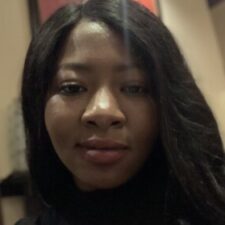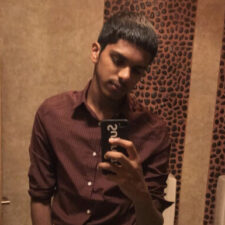You must be logged in to reply to this topic.
- 9/17 Cinematic Techniques part II
-
September 16, 2021 at 9:37 pm #74912

Prof. MasielloParticipantPlease watch this second video on cinematic techniques
https://www.dropbox.com/s/n4mydsme2yr615c/Cinema%20II%20f20.avi?dl=0
then, like last week, please reply to these questions:
1) Name three different things you feel you learned.
2) Mention something you liked about the presentation.
3) Ask at least one question that now comes to mind about this presentation.
Please post your replies in this Discussion folder by next Thursday night, Sept. 23.
-
This topic was modified 2 years, 7 months ago by
 Prof. Masiello.
Prof. Masiello.
September 17, 2021 at 5:54 pm #74929
weipeng linParticipant1) Name three different things you feel you learned.
1) In the film Evil Dead II (1987) when watching up to this part I can see that the editing was clean. I learned that after editing the finished product made two of the same person. I like how that same guy from the mirror popped out in front of him to scare him. By using this type of editing I can see that it makes the film scarier and cause the audience to have a jump scare.
2) In the film The Beaver (2011) when watching up to this part I like how the camera is going from left to right showing similar actions by son to father. I also learned that how the film had two-room and that how the scene was capture. I believe there’s an area designated for settings made in one area that is easier to film so that they don’t need to be in specific places to capture the settings that are necessary for that particular part.
3) In the film Kill Bill: Vol. 2 (2004) when watching up to this part I liked how the when killer nurse when she’s getting ready to approach the patient the music gets louder and more intense. I learned that most of the time when scenes seem to get intense or scary most of the time music is added so that it brings in a mood and makes the audience have a feeling where they also feel scared and pressured.
2) Mention something you liked about the presentation.
I liked that in this part of the film called Star Trek (2009) I liked the camera moments were done by the cameraman. When there’s an explosion the camera starts to shake. Also, music is added to intense the moment. But overall I liked the camera technique shaking to bring out the feeling when an explosion happens. And it also feels like a VR game that your playing.
3) Ask at least one question that now comes to mind about this presentation.
In the film The Godfather (1971) when the shooting happened in the massage room how did that guy his glasses shatter?
Did he really shoot him?September 17, 2021 at 7:09 pm #74930
GabbyParticipant1) Name three different things you feel you learned.
– I didn’t know mirrors could be so useful for representing different things. Whether it be chanting to find someone, or using mirrors to intensify thrilling/fighting scenes. I’m so used to scenes like the one from Creed (2015) where they always use mirrors to motivate themselves and such. But the way they’re used in Carrie and American Psycho is super interesting in how different the scenarios are, but how creepy and scary they both are.
– I never considered lighting to be a way to transition in time. I know day to night and the other way around, but I didn’t think about time transition indoors with the lighting. In To Die For (1995), the actress does a twirl and the house goes from bright to dim.
– I also didn’t realize how much of a difference makes when you put the camera with or without the view of the windshield. In Psycho (1960), you could see the actresses face clear. Her expressions of horror and anxiety were extremely up-close. But in The French Connection (1971), you can see the windshield, and the glare and everything in front of the drivers face.
2) Mention something you liked about the presentation.
I liked the scene in Midnight Cowboy (1969) where they use silhouette highlighting to differentiate the two characters. One is hunchbacked, and has a interesting walk whereas the other is straight, and walks calmly. You would obviously see the difference in a front shot as well, but the silhouette shot helps with that, as well as transitioning.
3) Ask at least one question that now comes to mind about this presentation.
Do filming sets wait for sunsets or that sort of lighting in order to do silhouette shots like that? Or would they use greenscreens if they didn’t like how the sun was setting or it wasn’t visible at the time?
September 17, 2021 at 9:28 pm #74931
Prof. MasielloParticipantWei Peng,
LOL. No, the man was not actually shot but it is an amazingly effective moment that even after hundreds of viewing makes me flinch. Probably the sound effect was added and the actual blood was done with an explosive paint capsule from underneath. I have no idea how the glass was exploded.
September 17, 2021 at 9:44 pm #74932
Prof. MasielloParticipantGabby, those are interesting comments and questions.
In the movies with sunsets from clips from Gone with the Wind through the 1960s, there was no CGI yet, but there must have been some way, with painted backgrounds and special rear lighting, to achieve the silhouettes. Nowadays, with CGI, such lighting effects are done with computers and jaded audiences are less impressed, knowing they are fake.
As a point of fact, the shorter man (Dustin Hoffman) in the highly recommended Midnight Cowboywas a dwarf in the novel, but a normal, very sick man in the film with polio and pneumonia. The cowboy of the title is a would-be male prostitute played by Jon Voigt, Angelina Jolie’s real-life father. I encourage you to see this Oscar-winning film.
September 23, 2021 at 12:10 am #75016
Angel RiveraParticipant1) Name three different things you feel you learned.
One thing I’ve learned is cross cuts can be used to show multiple events simultaneously, and can be used with different styles such as the panning from left to right in The Beaver and The Godfather using traditional cross cuts. Another thing I’ve noticed was the versatility of split screen. In Rules of Attraction it was used to emphasize the actors facial expressions during their conversation, while in Sisters it was used to not only show what the characters are doing concurrently, but also to add tension to the scene. Lastly, I’ve learned that there’s different ways to use Time Lapse. In To Die For, it was through the use of lighting. In the next example Hachi: A Dog’s Tale, time lapse was shown by using the changing of seasons with the tree’s leaves changing color and falling off.
2) Mention something you liked about the presentation.
Something I’ve liked about the presentation was the scene used for Sisters. I’m interested in the movie and may watch it during my free time. Also, many topics in the presentation showed different ways each technique can be used. It makes the presentation engaging.
3) Ask at least one question that now comes to mind about this presentation.
One question I have after watching this presentation is, are there any uses of jump cuts in animation?
September 23, 2021 at 11:11 am #75025
Justin AlavaParticipantName three things you learned:
The first thing I learned is that mirrors can be useless in representing different things. For example empyazing fight scenes or give the scenes a different perspective. Another thing I learned is that I didn’t know cut scenes could be cut to show multiple things. Lastly, is the use of time lapse is extremely useful due to showing the passing of time, and that’s useful when movie directors try to switch from one time period to another and also show the progress of something.
Name something you liked:
I like how they add music to scenes to give a different type of feeling. It gives you emotion and a sort of type of connection to the movie.
Ask at least one question:
Is it important to film in the day because of the sunlight or could the same shots could be captured during the nighttime?September 23, 2021 at 2:36 pm #75027
Shania TennantParticipantName three different things you feel you learned.
Crosscutting, I discovered, takes movies to a whole new level. For example, in Slaughterhouse-five, the camera would alternate between the man’s current life and his experiences during World War II. It was fascinating to watch how his life changed through time but remained consistent. Also, as he was playing with his dog, his dog would age with time, which was amazing to watch.
I also learned that split-screen sequences provide viewers with much more information about what’s going on. They showed Carrie’s point of view of what she’s doing to the auditorium and how she’s killing all the different types of individuals in Carrie, and then they showed what the audience would see if they were there staring at her. It adds more depth and importance to the scenario.
Finally, I learned about the director’s temporal manipulation techniques, which included elliptical editing. I loved how this could be used to switch scenes from day to night and back again while keeping the character in the same location. For example, in Misery, when the crazy lady imprisoned the writer and forced him to sit and finish the story, he was in the same place, but you could tell how much time had passed by the way the scenes and his clothes changed, and in Day of the Locust, they used cars to edit people sitting at the same bus stop.
Mention something you liked about this presentation.
I enjoyed how the word “red-rum” became “murder” after the mirror scene in The Shining. That was a wonderful idea.
Ask at least one question when it comes to this presentation
Do the performers truly use their phones to hear each other during the phone sequences, or are they just talking to themselves?
Most actors are just pretending to hear someone a phone. Perhaps there may be some who insist on actually hearing the other side.
-
This reply was modified 2 years, 5 months ago by
 Prof. Masiello.
Prof. Masiello.
September 26, 2021 at 11:49 am #75080
Prof. MasielloParticipantAngel,
I could not think of any jump cuts in animation, but considering how sophisticated animation has become, I do not doubt jump cuts have been used. Animation also includes animated shorts, cartoons, and anime. I attempted to Google this, but could not find a better answer for you.
September 26, 2021 at 12:02 pm #75081
Prof. MasielloParticipantJustin,
One of the reasons the main US film industry went from Fort Lee, NJ to Hollywood, CA was due to the steady sunshine that was needed when film equipment was heavy and even interior scenes were done in specially built sets w/o ceilings.
There was a time even up until the1960s when special filters were used to create the appearance of nighttime during the day. It was called “day for night.”
Now photographic equipment can shoot at night.
By the way, if you have ever watched a movie, TV show, or commercial being shot outdoors, even natural light needs reflectors and some artificial light to fill in shadows.
Try an experiment: take a picture of someone in the sun at noon. There will be unpleasant shadows because the light is directly above. Take a picture of the same person 45-30 minutes before sundown and the light is a different hue and position and creates beautiful results. Near sundown is called the “magic hour” for photographing people.
September 29, 2021 at 1:51 am #75161
Tatiana B.ParticipantQuestions about Cinematic Techniques II video
a. Name three different things you feel you learned.
1. In this film I learned that mirrors, if shown prominently often signify special meaning. In Snow White and the Seven Dwarfs 1937 film the mirror is used to transport the viewer from reality to fantasy world. The character Maleficent asks the mirror repeatedly “who is the fairest of them all?’ as if a mirror would tell us. In Harry Potter and the Sorcerer’s Stone 2001 film the mirror allows Harry transports its viewers to an alternate time where Harry’s parents are still alive.
2. Cross-cutting panel scenes with overlapping or switching back and forth between scenes. Cross cutting has similar elements to visually link scenes. We see this the Rocky IV 1985 film in the scene where Rocky and Drago are doing their training techniques .This editing technique suggest that two scenes are happening simultaneously, though this isn’t always the case. Cross cutting gives the impression that this action is occurring in different location at the same time.
3. Elliptical editing is used to alter time. This technique helps to reduce the details in this process. Elliptical editing allows an event to be shorter than the period of the film. This occurs with cut between two shots to show part of the same event. Montages and elliptical editing are combined in today’s films such as Fight Club 1999 to produce a fast-paced film.
b. Mention something you liked about the presentation.
I liked the entirety of the film. I appreciated how a montage of scenes are used to give visual perspective of why these things such as cross- cutting are used. I also liked learning that numerous small jump cuts show small amounts of time. Due to the way this presentation was edited I feel compelled to watch every movie in this presentation. I actually despise not completing movies, so this will allow me to expand my horizons as I view some if not most of these films.
Dear Shania,
Oh, my! I always hope that students will want to see some of those movies because so many of them are worthwhile. However, there are some that are not worth your time and are there to demonstrate a point.
Since I add the titles and release years, they should be easy enough to research. (Don’t go by the end credits because I have re-edited these presentations every semester and do not update the end credits since most people ignore them.
c. Ask at least one question that now comes to mind about this presentation.
Is lens flare only used to for dramatic effects or can this be done without enhancing the stage lighting?
Lens flare is sometimes just a natural occurrence without enhancement. It depends on the lens angle and the light direction. People who don’t know better sometimes get lens flare accidentally on their cameras and usually it ruins their shots.
-
This reply was modified 2 years, 5 months ago by
 Prof. Masiello.
Prof. Masiello.
October 4, 2021 at 2:34 pm #75226
Asif KhanParticipant1) Name three different things you feel you learned.
1. I learned that when you mix two scenes together, you call it “cross cutting”.
2. I learned that sections aren’t as bad as they would seem in different situations.
3. I learned that lighting does indeed play a big role in situations. In Midnight Cowboy (1969) the movie is named Midnight, and the walkthrough is from day to night matching with its name.2) Mention something you liked about the presentation.
I liked that there were different scenes from romance to action to horror, giving it a more diverse taste. Also there were some gory scenes, which were pretty cool.3) Ask at least one question that now comes to mind about this presentation.
What was the average budget for films in the 1900s?Most movie studios brag about how expensive their films are to make, Asif, but
I don’t know about financing movies usually in the millions. Budgets are usually affected by the salaries of the actors and the amount of time and travel involved in filming. One would think that with computers things would be cheaper, but special effects are very expensive. As an example, look at this article about Henry Cavill’s mustache that was covered up due to a conflict in his filming roles: https://www.nme.com/news/heres-true-cost-henry-cavills-cgi-moustache-2363020 The end result looked terrible in the first Justice League release, https://www.nme.com/news/heres-true-cost-henry-cavills-cgi-moustache-2363020 and things were changed altogether for the ZackSnyder re-edit.-
This reply was modified 2 years, 5 months ago by
 Prof. Masiello.
Prof. Masiello.
October 27, 2021 at 2:22 pm #75544
Asher DerryParticipantLearning Points
1. This video helped draw out some techniques used to deliver abstract concepts to film audiences. One that stood out to me was the varied roles of mirrors. In general, mirrors in film allow a visual representation of introspection, or in many cases a tangible lens through which to view perceptions of reality. I noticed that the mirror truly is two way – sometimes serving as a window into reality from another world (Such as in What Ever Happened to Baby Jane,) and sometimes as a window into another world from reality (including in the films Carrie and Harry Potter & The Sorcerers Stone.) In a similar role, mirrors in The Lady from Shanghai and The Talented Mr. Ripley serve to incite the audience to question the protagonists own perception of reality in an empathetic manner.
2. The use of cross cutting and split screens bring multiple times or places into a single presentation that is unavailable in real life. This plurality of emotion and perception is a powerful tool for visual storytelling. In direct contrast to this broadened spectrum, silhouetting allows film-makers to narrow the visual spectrum and therefore increase the intensity of a scene by focusing on the macro, avoiding distraction by micro details. The two visual elements of a silhouette scene that the audience is likely to retain are the colors (establishing mood), and the action depicted as if it were an idea or thought without the distraction of unnecessary details.
3. One point from the video I would like to disagree with is the claim that time lapse has no equivalent in literature. I believe the use of time-lapse and jump scenes is simply a visual representation of literary descriptions of change, such as changing seasons, the bustling of a city, etc.
Your writing and vocabulary are impressive, Asher.
Presentation Takeaway
While all of the concepts presented are common in film, it was helpful to see them broken down down as techniques used in filming and editing to enhance the experience for an audience.
Question for Prof. Masiello
I am curious about the filming technique used for the mirror scene of Dr. Jekyll and Mr. Hyde. The camera angle appears to be perpendicular to the surface of the mirror, which would show the camera rather than the subject. How was this effect achieved?
If you look at that scene again, there is even the glass shown in closeup which helps with POV but also suggests that there was a double exposure perhaps going on. The way the transformation was done was by adding or removing filters sensitive to certain colors. The actor already had his makeup on and the filters revealed the ugliness gradually. I am guessing that Dr. Jekyll (Frederick March) was filmed separately from his counterpart in the mirror.
-
This reply was modified 2 years, 5 months ago by
 Prof. Masiello.
Prof. Masiello.
-
This reply was modified 2 years, 5 months ago by
 Prof. Masiello.
Prof. Masiello.
-
This reply was modified 2 years, 5 months ago by
 Prof. Masiello.
Prof. Masiello.
-
This reply was modified 2 years, 5 months ago by
 Prof. Masiello.
Prof. Masiello.
-
This topic was modified 2 years, 7 months ago by
You must be logged in to reply to this topic.


